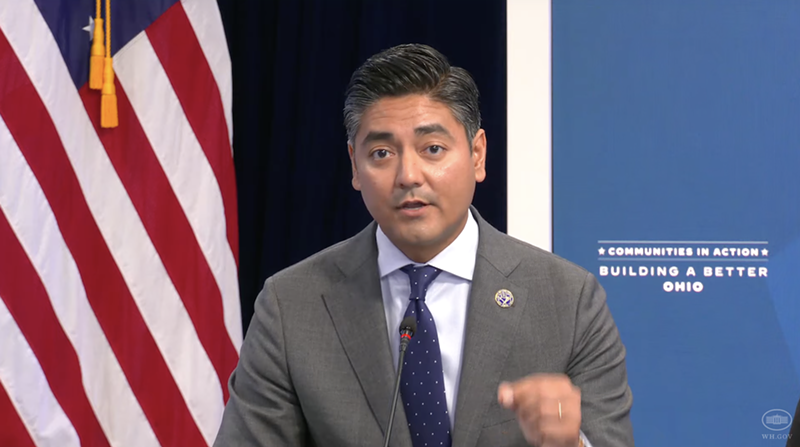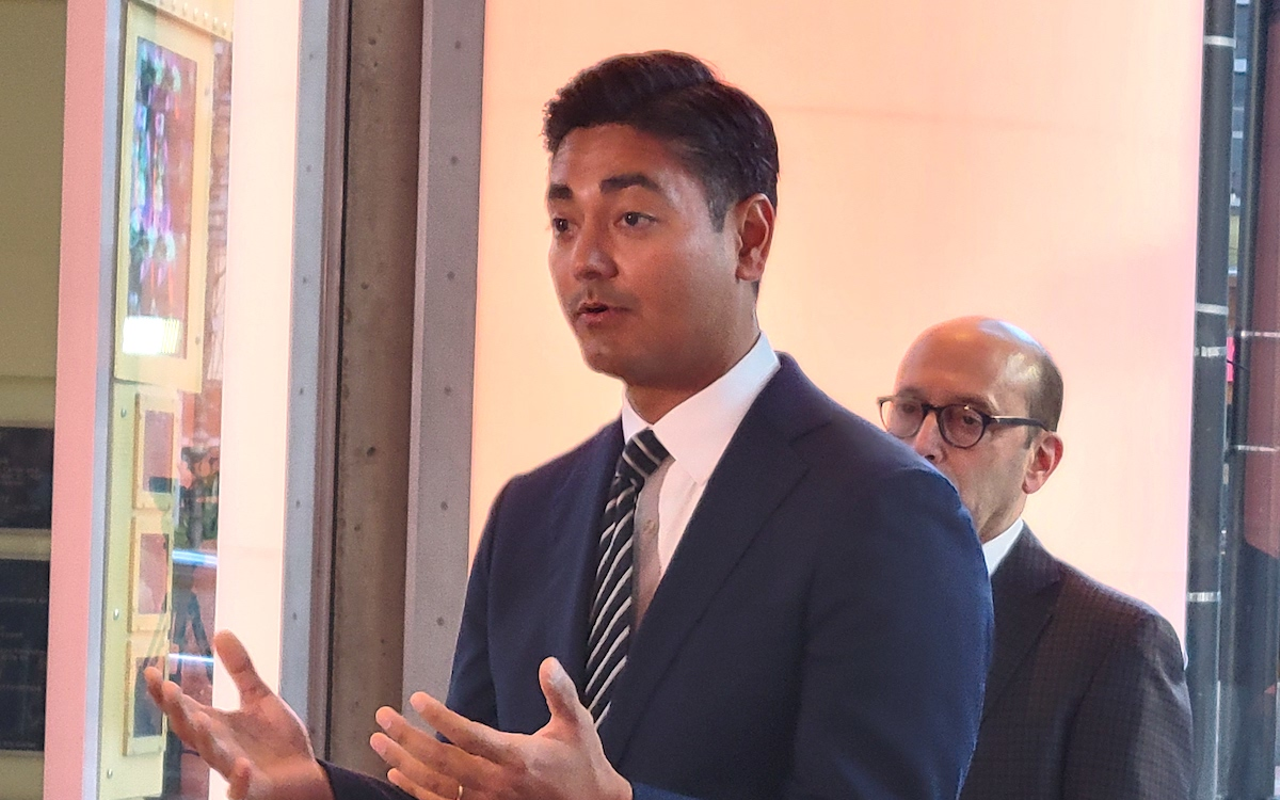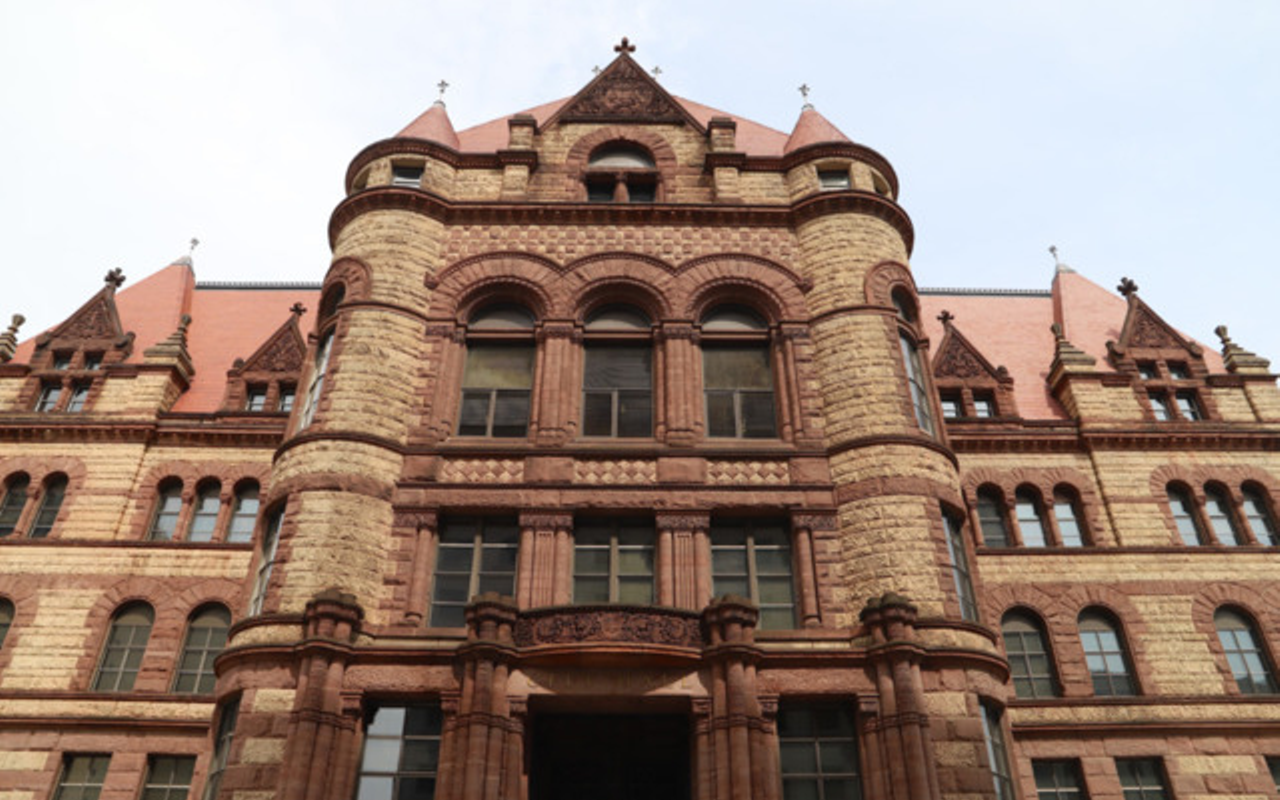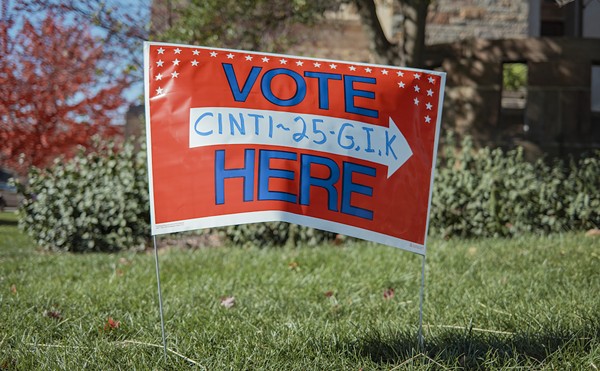
Photo: Via White House Streaming Service
Cincinnati Mayor Aftab Pureval speaks at the White House on Sept. 7, 2022, about how the American Rescue Plan has boosted Cincinnati projects.
Cincinnati Mayor Aftab Pureval, along with mayors and elected officials from Cleveland, Akron, Columbus and Youngstown, traveled to Washington D.C. on Sept. 7 to talk to the White House about how the American Rescue Plan boosted Cincinnati projects and what he wants to see next for the city.
“Put simply, had it not been for ARP, Cincinnati would have failed,” Pureval said during the digitally streamed panel. “We were staring into the abyss.”
The panel interview was the first installment of the Biden-Harris administration’s Communities in Action: Building a Better America initiative. The series aims to showcase how regions are improving due to legislation.
Funding for public safety services
Pureval emphasized how necessary ARP funds were to preventing public safety service cuts in the most recent city budget. To maintain city operations, the budget – which was revealed on May 26 – relies on $18.6 million in ARP funds, which is a one-time source from 2021.“ARP made it possible for us to stave off an existential threat,” Pureval said.
Pureval also told White House officials that Cincinnati used ARP funds to target economies and businesses that were at risk of shuttering during the COVID-19 pandemic.
“We were able to help Black-owned businesses and childcare provider businesses who were disproportionately impacted by the pandemic,” Pureval said.
Since 2020, U.S. President Joe Biden's administration has pumped trillions of dollars into national and regional relief and projects through the Coronavirus Aid, Relief and Economic Security (CARES) Act, the ARP Act and other initiatives. Metros have used their allotments of these funds for COVID-19 vaccination efforts, general public health initiatives, transportation projects, housing relief, business boosts, corporate recruitment and job creation, among other things.
Investing in tech manufacturing
Pureval said federal funds are not just about providing a life raft for the economy, but also creating an opportunity for growth.“[ARP] is now allowing us to create a city of the future,” Pureval said. “We took nearly $10 million of ARP funding in partnership with our Port [of Greater Cincinnati Development Authority] for site readiness for high-tech manufacturing,” Pureval said.
In January, Intel revealed that it chose Licking County in which to build its new semi-conductor facilities. Intel’s investment in the region will create 3,000 jobs with six-figure average salaries, as well as 7,000 construction jobs and more than 10,000 jobs in the area indirectly.
The CHIPS and Science Act, which Biden signed early in August, "seeks to bolster the US semiconductor supply chain and promote research and development of advanced technologies in the United States," an Aug. 12 release from the White House says.
“Manufacturing built Ohio; high-tech manufacturing is going to rebuild Ohio,” Pureval said.
Pureval also used the White House appearance to mention that the Brent Spence Bridge and Western Hills Viaduct projects also can benefit from a federal boost. Next steps for the Brent Spence Bridge
“I cannot be in the White House without talking about the very importance of infrastructure, specifically the Brent Spence Bridge,” Pureval said. “It is without a doubt the most important infrastructure investment to create good paying jobs with good benefits right in our region.”
In July, travelers were given a glimpse into the revised future of the Brent Spence Bridge and its planned companion bridge, including new lane configurations, wider shoulders and plans to silo local and thru highway traffic.
In May, DeWine and Beshear jointly asked for $1.66 billion from the Multimodal Projects Discretionary Grant, a program through the U.S. Department of Transportation. U.S. Transportation Secretary Pete Buttigieg announced $2.9 billion in available funding through the program in March, as part of the new infrastructure law.
Stay connected with CityBeat. Subscribe to our newsletters, and follow us on Facebook, Instagram, Twitter, Google News, Apple News and Reddit.
Send CityBeat a news or story tip or submit a calendar event.









